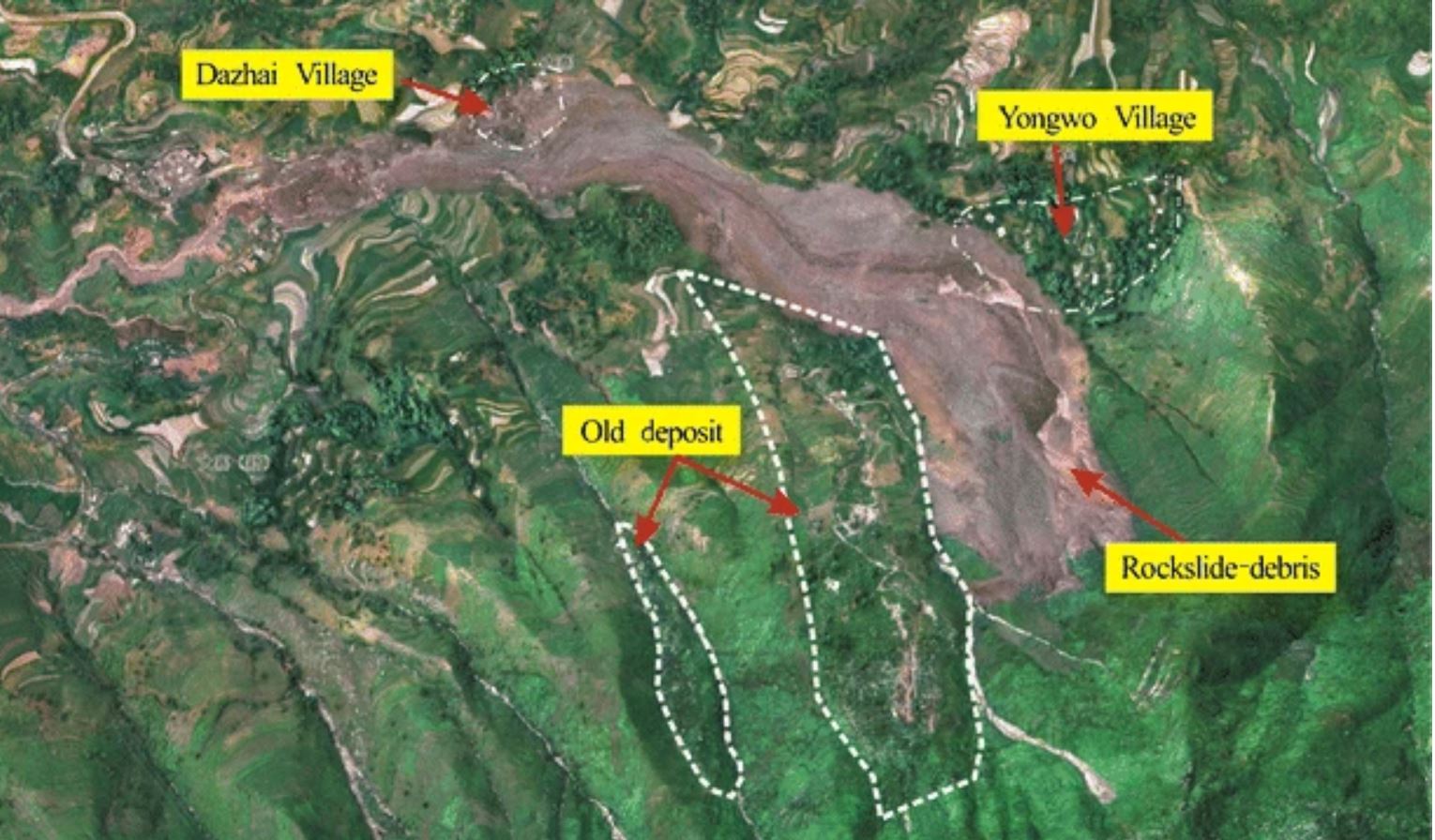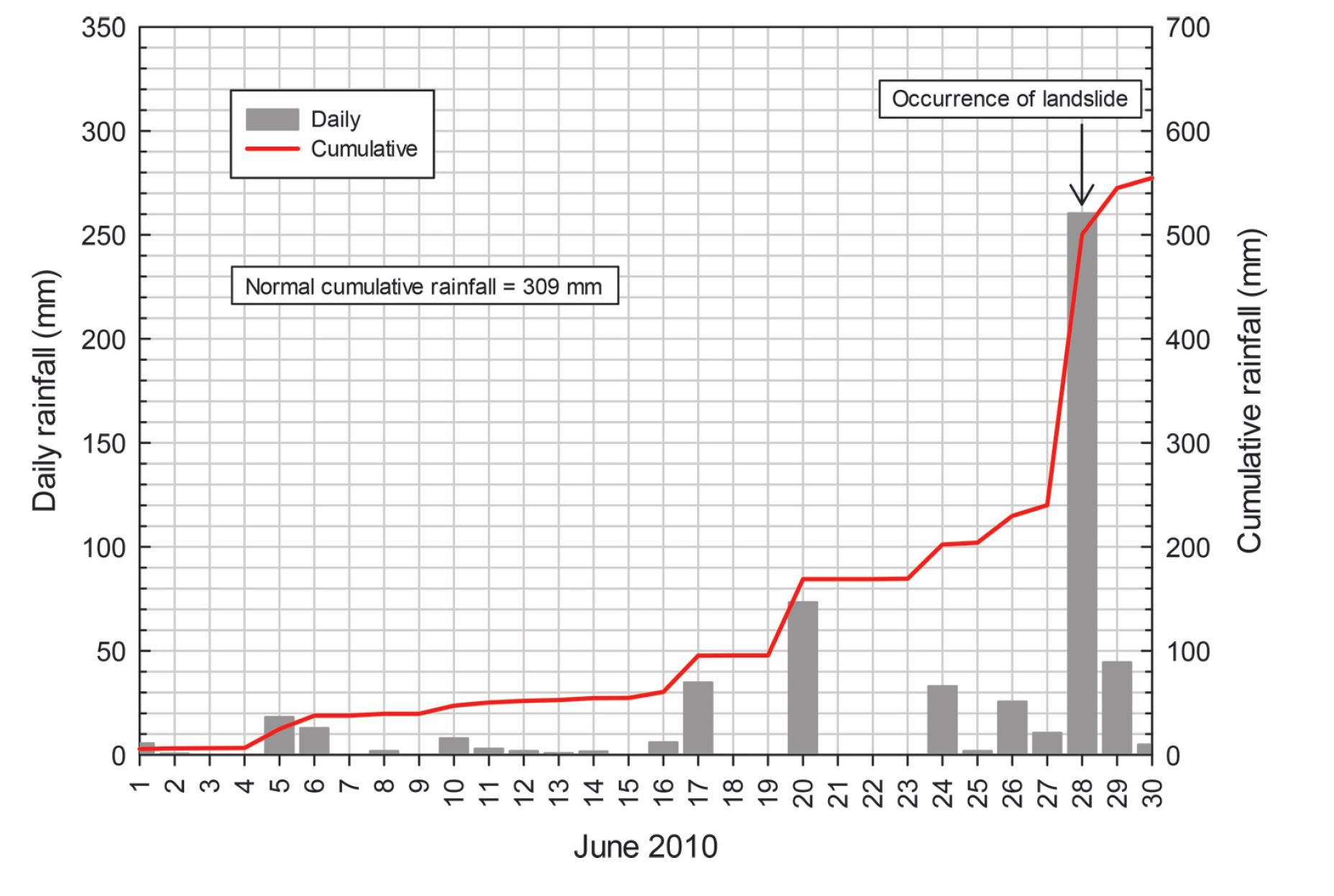28 March 2020
The 28 June 2010 Guanling landslide in China
Posted by Dave Petley
The 28 June 2010 Guanling landslide in China
On 28 June 2010 the Guanling landslide in Guizhou, China killed 99 people. Triggered by heavy rainfall, the landslide had a volume of almost a million cubic metres and a travel distance of about 1.4 km. The landslide is described in an article in the Canadian Geotechnical Journal (Xing et al. 2015). Another paper, Yin et al. (2011) includes this aerial image of the landslide source and track:-

Aerial image of the source and track of the Guanling landslide. Image from Yin et al. (2011).
.
The landslide appears to have occurred early in the 2010 summer monsoon. Xing et al. (2015) include in their paper the following rainfall information for the days leading up to the landslide. On 28 May this area received 260 mm of rainfall:-

Rainfall data for the 28 June 2010 Guanling landslide, from Xing et al. (2015).
.
Note that in an average year, the area has received 309 mm of rainfall by 28 June, so this was an exceptional event. This was the highest rainfall total on record for this area at the time of the Guanling landslide.
The landslide itself occurred at about 2 pm when a mass of Triassic sandstone collapsed. According to Xing et al. (2015), the landslide travelled across the valley floor and partially super-elevated on the far side, before descending the slope to impact first Yongwo village, where 21 houses were destroyed. The landslide transitioned into a rock avalanche, travelling rapidly down the valley. Close to the valley floor, the topography had a sharp bend; the rock avalanche super-elevated once more, striking the village of Dazhai, where it destroyed 17 houses. Yin et al. (2011) estimate that it had a peak velocity of about 45 metres per second (about 160 km per hour).
The runout distance and velocity of the landslide were unusually high. Yin et al. (2011) suggest that deposits in the floor of the valley through which the Guanling landslide passed were saturated, providing a low friction surface that accounts for the exceptional mobility.
Every year there are a small number of these large, highly destructive landslides in high mountain areas. The Guanling landslide illustrates the difficulties of identifying potential locations and forecasting their behaviour.
References
Xing, A., Wang, G., Li, B., Jiang, Y., Feng, Z. and Kamai, T. 2015. Long-runout mechanism and landsliding behaviour of large catastrophic landslide triggered by heavy rainfall in Guanling, Guizhou, China. Canadian Geotechnical Journal, 52 (7), 971-981. https://doi.org/10.1139/cgj-2014-0122.
Yin, Y., Sun, P., Zhu, J. et al. 2011. Research on catastrophic rock avalanche at Guanling, Guizhou, China. Landslides 8, 517–525. https://doi-org/10.100/s10346-011-0266-8.


 Dave Petley is the Vice-Chancellor of the University of Hull in the United Kingdom. His blog provides commentary and analysis of landslide events occurring worldwide, including the landslides themselves, latest research, and conferences and meetings.
Dave Petley is the Vice-Chancellor of the University of Hull in the United Kingdom. His blog provides commentary and analysis of landslide events occurring worldwide, including the landslides themselves, latest research, and conferences and meetings.